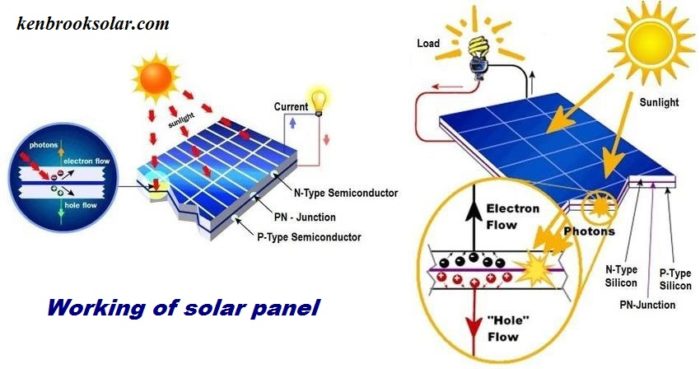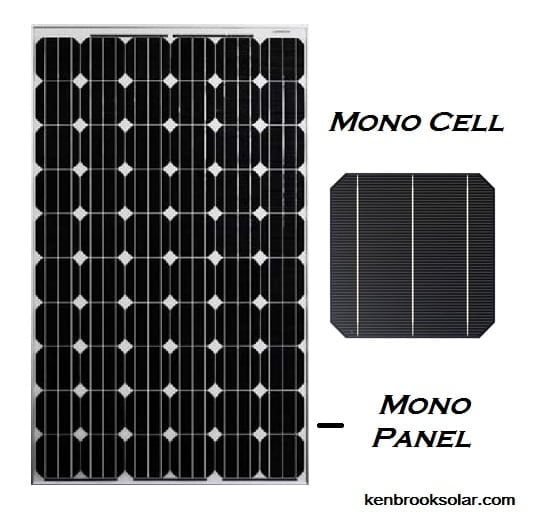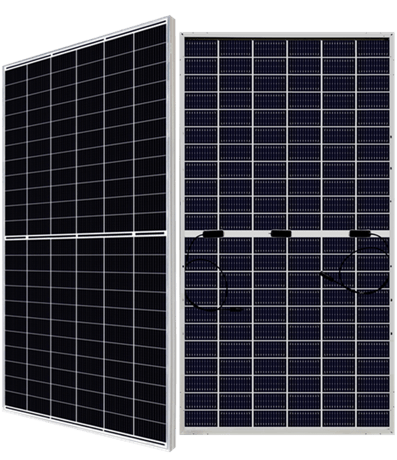Polycrystalline Solar Panel Price With Complete Details
Polycrystalline solar panels are the most traditional and popular type of solar panels available in the market. With an efficiency rate of 16% to 17%, the panels are highly cost-effective. And hence, they are the first choice of most solar consumers.
Polycrystalline solar panels are also known as poly solar panel, multi-crystalline or many-crystal silicon panels. Because there are many crystals in each cell.
Read in Detail:
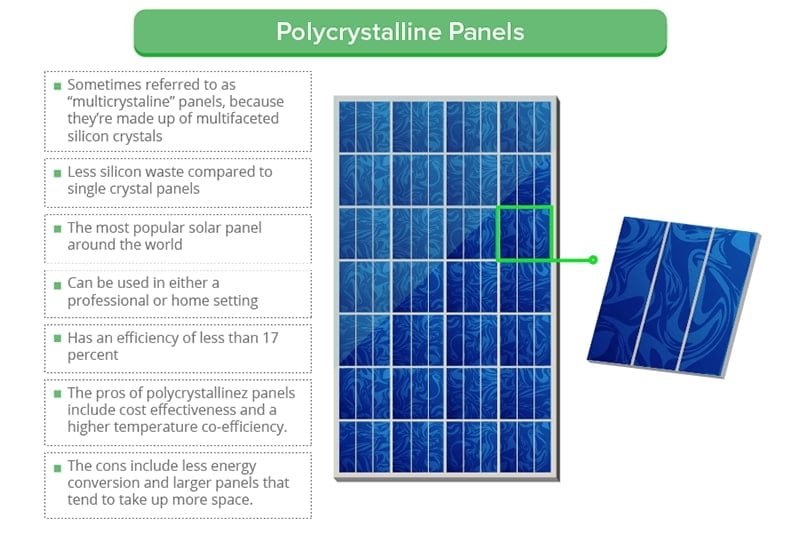
These panels are made of silicon. To make the cells of a polycrystalline panel, fragments of silicon are melted together to form the wafers.
Poly crystal solar panels can be identified by their blueish appearance. Also, the panels have no round edges. In the outer structure of these panels, cells are square and the angles are uncut.
There are various capacities in polycrystalline solar panel. So it’s worth spending 10 minutes reading this information and selecting the best that meets all your power requirement.
How Polycrystalline Solar Panels Work?
Polycrystalline solar panels are made from semiconductor material as a result of which they can exhibit the photovoltaic effect. Using this effect, the solar cells present inside the polycrystalline solar panels absorb photons from sunlight and discharge electrons.
The electrons get discharged and with a certain setup, start flowing in a uniform direction. This results in generating electrical energy which can be used to power home appliances.
Read in detail: How Solar Panel Works?
#1. Polycrystalline Solar Panel Price List
Since the process of creating polycrystalline solar panels produces less waste and requires less energy, the price of these panels is relatively cheaper. In fact, the polycrystalline solar panels are the least expensive solar panels available.
The price of a polycrystalline solar panel depends upon its size and capacity. You will have to pay according to its capacity. To provide you with a rough idea, we have mentioned the prices of different capacity polycrystalline solar panels in the table below.
| Solar Panel Model | Selling Price |
| 50 Watt Solar Panel | Rs. 1,500 |
| 100 Watt Solar Panel | Rs. 3,000 |
| 150 Watt Solar Panel | Rs. 4,500 |
| 200 Watt Solar Panel | Rs. 4,800 |
| 250 Watt Solar Panel | Rs. 6,000 |
| 300 Watt Solar Panel | Rs. 7,200 |
| 350 Watt Solar Panel | Rs. 8,000 |
- (Inclusive of all taxes) Prices can vary ± 10% to 12% depending on location, promotions and availability, and solar brand.
- Prices are exclusive of Govt. Subsidy, as the subsidy on solar systems depends on your eligibility and types of solar system.
- Check our Online Solar Shop or Amazon Store for latest price and stock availability.
Read more about subsidy on solar panel here: https://kenbrooksolar.com/solar-benefits-mnre-govt-subsidy
#2. Other Types of Solar Panel
Besides the traditional polycrystalline solar panel, there are two other successful types of solar panels you can go for. These types are monocrystalline and bifacial solar panels. Both of them are more advanced and efficient. But they come at high rates.
Have a look below to know more about these types of solar panels.
#1. Monocrystalline Solar Panel
Monocrystalline solar panels are 17% to 22% efficient at energy production. The high efficiency is a result of the designation that is well-organised using a single silicon crystal.
The panels are uniformly darker having square wafers and rounded edges. Consequently, the panels have lots of small gaps for sunlight to enter and initiate the conversion process.
Monocrystalline solar panels have lower temperature coefficient, longer lifespan and high efficiency rate. The only drawback is the high price rate they come with. For the rest, the monocrystalline modules are the best choice for solar panels.
Continue reading: Latest prices, working, efficiency, pros & cons of bifacial solar panel.
#2. Bifacial Solar Panel
Bifacial solar panels are the most advanced type of solar panels that offer a high efficiency rate of around 27%. Thanks to the technology they are built with that allows the solar panels to absorb sunlight from both the sides– front and rear.
The feature of dual surface absorption is what makes them different from the traditional panels. And hence, bifacial solar panels are highly advanced and cost-effective.
Bifacial solar panels are expensive than polycrystalline solar panels but they are more productive. If you can compromise with the price rate for high performance, bifacial solar panels are the ideal choice for you.
#3. Features of Polycrystalline Solar Panel
Polycrystalline solar panels allow you to enjoy the benefits of solar energy at an affordable rate. They operate in an eco-friendly manner and produce 100% clean energy for running electrical appliances. And hence, the polycrystalline solar panels help you reduce your electricity bill quite effectively.
These solar panels are cheaper and hence can be used significantly for large scale installations. You can use them for your solar farms, houses and roof-mounted arrays.
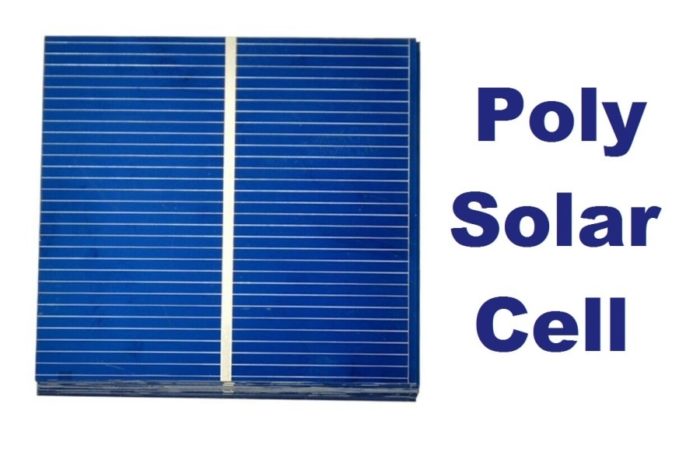
There are many common features of poly-crystalline solar panel. The most popular features are listed below.
- It is less expensive than monocrystalline or bifacial solar panels.
- It comes in a blueish colour.
- Polycrystalline solar panels are highly reliable.
- The life span of these solar panels are more than 25 years.
- These solar panels can bear high level of heat/sunlight.
- The panels are easy-to-install and operate.
- They require low maintenance.
- You can expect high returns on investment.
- The panels have the capability to supply power to a completely off-grid system.
- They are available in a wide range of power wattages and hence can be used for both small and large scale installations.
How many solar panels are needed to run a house?
The number of solar panels you’ll need to run your house depends upon the power your house consumes, the weather conditions of your area and several other factors.
To provide you with a rough idea, we have created a table assuming you are using a 330 watt solar panel. The table shows the number of panels required as per power generation and system capacity.
| Solar System Capacity | Generation Per Day | Panels Required |
| 1kW Solar System | 4 units | 3 |
| 2kW Solar System | 8 units | 7 |
| 3kW Solar System | 12 units | 9 |
| 5kW Solar System | 20 units | 15 |
| 10kW Solar System | 40 units | 30 |
#4. Pros & Cons of Poly Solar Panel
Obviously, there is no type of solar panel that can prove to be the ultimate best for every customer. The productivity and performance of a solar panel depends on several factors.
Also, each type of solar panel comes with certain pros and cons. It’s up to you to decide– for what set of advantages you can compromise with the drawbacks.
The pros and cons of polycrystalline solar panels are listed below.
Advantages
- Polycrystalline solar panels are less expensive.
- These solar panels are long lasting.
- The estimated life of poly crystal solar panels is 25+ years.
- Suitable for high temperature areas.
Disadvantage
- The productivity level of polycrystalline solar panels is typically low.
- For producing more power, you will need a good number of poly crystal solar panels.
- These panels will cover a big area of your property.
Frequently Asked Question
Yes, polycrystalline solar panels are a good option for people looking for an affordable and averagely efficient solar panel.
In terms of productivity, a monocrystalline solar panel is best but when it comes to comparing price rate, a polycrystalline solar panel is a clear winner.
A simpler manufacturing process and cost-effective efficiency at affordable price are the most significant advantages of a polycrystalline solar panel.
Polycrystalline, a form of silicon element, is used in photovoltaic industries to work as a raw material for gadgets including solar gadgets.
It depends on thier power rating and solar brand. The least capacity polycrystalline solar panel, a 50 watt panel costs around ₹1,500 while a 100 watt polycrystalline solar panel costs around ₹3,000. You can see the complete price list above.
Polycrystalline solar panels are reasonably cheaper than monocrystalline solar panels.
A polycrystalline solar panel is a traditional type of solar panel that is created by fragments of silicon crystals.
Polycrystalline solar panels are made of fragments of silicon crystals in each cell. These crystals render the electrons from moving hence result in decreasing the efficiency.
Bifacial solar panels are most efficient (27% efficient), followed by monocrystalline solar panels (15-20% efficient).
The lifespan of a polycrystalline solar panel is more than 25 years.
There are three types of solar panels namely, monocrystalline, polycrystalline and bifacial solar panels.
Monocrystalline type of solar panel is the best solar panel on the basis of customer reviews.

